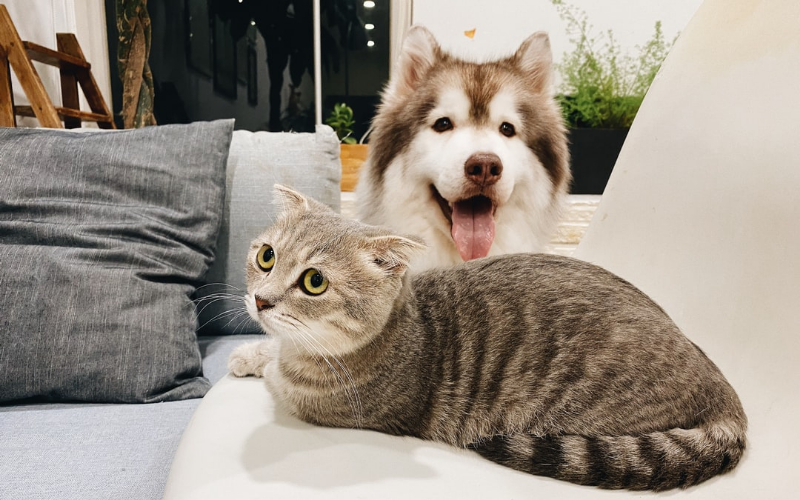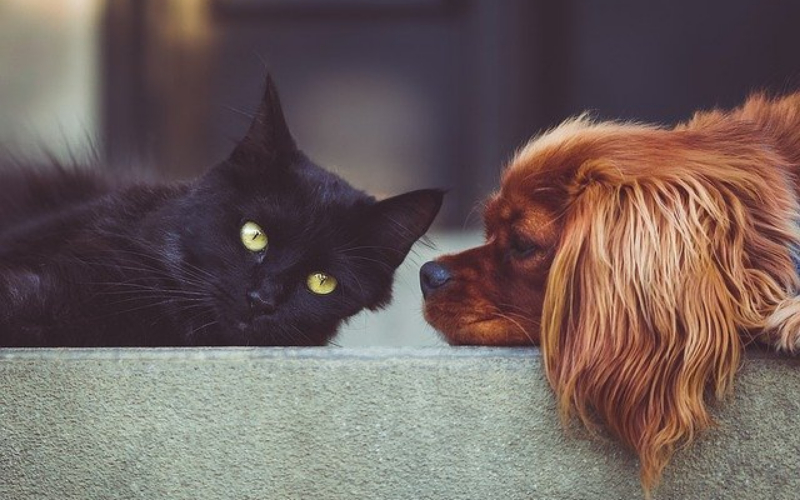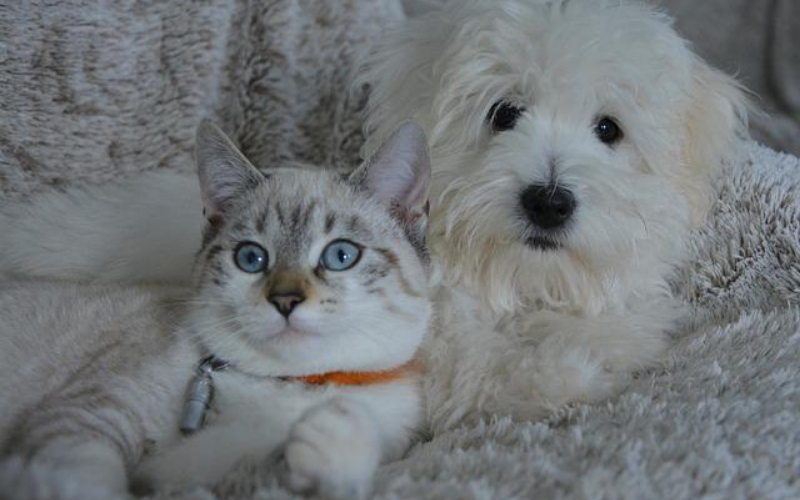We have all heard the saying “getting along like cats and dogs”. Certainly, coexistence between these two species can be difficult in the home, as they have very different personalities and needs. However, it is not impossible for dogs and cats to get along. Fostering a positive and peaceful relationship between our furry friends is possible and easier than you might think.
 Here are the top five tips for dogs and cats living together at home:
Here are the top five tips for dogs and cats living together at home:How do I introduce them?
Introducing dogs and cats when they are still small can make it easier for them to get along. This does not mean that it is impossible to present them already in adulthood, although it may take a little more time.
The meeting should take place in a large space. It is preferable to cut the cat’s nails beforehand and keep the dog on a leash to avoid any accidents. At first, keep them in separate rooms and offer them a cloth impregnated with each other’s scent. Then you can carry out the official presentation. Let them sniff each other and approach each other in their own time. If something goes wrong, separate them and try again later.
To avoid over-stimulating the dog, it is advisable to take him for a walk or buy him a new toy at the pet store.
pet store
to release energy before the presentation. This will help keep you calm.
pet store
to release energy before the presentation. This will help keep you calm.
Places your food in separate spaces
It is important that your dogs and cats have their own space to eat. Both are predators, and it is necessary to prevent them from feeling that they have to fight or compete for food. Ideally, the cat’s food and water bowl should be placed in high places to which only the cat has access. Try not to mix their kibble or exchange one for the other, as cat food is not nutritious for the dog and vice versa.
When the dog is eating, prevent the cat from approaching as it may become angry and start a dispute.
 Give the cat privacy
Give the cat privacy
Cats are solitary and somewhat finicky animals by nature. That is why it is important that there are shelters in the house where the cat can rest from the dog’s company and be at ease. These can be small nooks and crannies where it can hide or high places. It is also important that the cat litter tray is out of the dog’s reach, as he needs a quiet place and privacy to relieve himself.
Prevents them from feeling jealous of each other
Despite being animals, our furry friends can sometimes feel emotions that, at first glance, seem very human. One of them is jealousy. The competitive instinct can occur in dogs and cats not only when it comes to food, but also to toys or even the attention of the owner. That is why it is important to take precautions so that there is no envy between pets, as this can end in a fight.
You need to provide both with the same level of attention and affection. It is also important to remember that everyone should have their own toys. Try to play with them often to keep them entertained and to make them expend energy. This will keep them calm throughout the day and suppress their predatory instincts, which will prevent fights between our pets.
 Don’t expect them to become friends
Don’t expect them to become friends
Even if a peaceful coexistence between dog and cat is achieved, this does not necessarily mean that they will become friends. Sometimes, it is enough to get the animals to tolerate each other and be able to live together without much friction. Perhaps they will get to play and sleep together, and the cat may even start grooming its doggy companion. However, the dynamics of the relationship must be decided by them. If either animal is uncomfortable with or simply disinterested in the other pet, we should respect that and not force them to interact if they do not want to.
Socializing two such different pets is a slow, gradual process that requires a lot of patience. The important thing is to be realistic, respect the needs of our animals and make the necessary decisions to keep them safe. If you follow these tips, you will most likely achieve a harmonious coexistence between your pets. If that’s not the case and you don’t know what else to do, consider a consultation with an ethologist.
Indice


 Give the cat privacy
Give the cat privacy Don’t expect them to become friends
Don’t expect them to become friends




